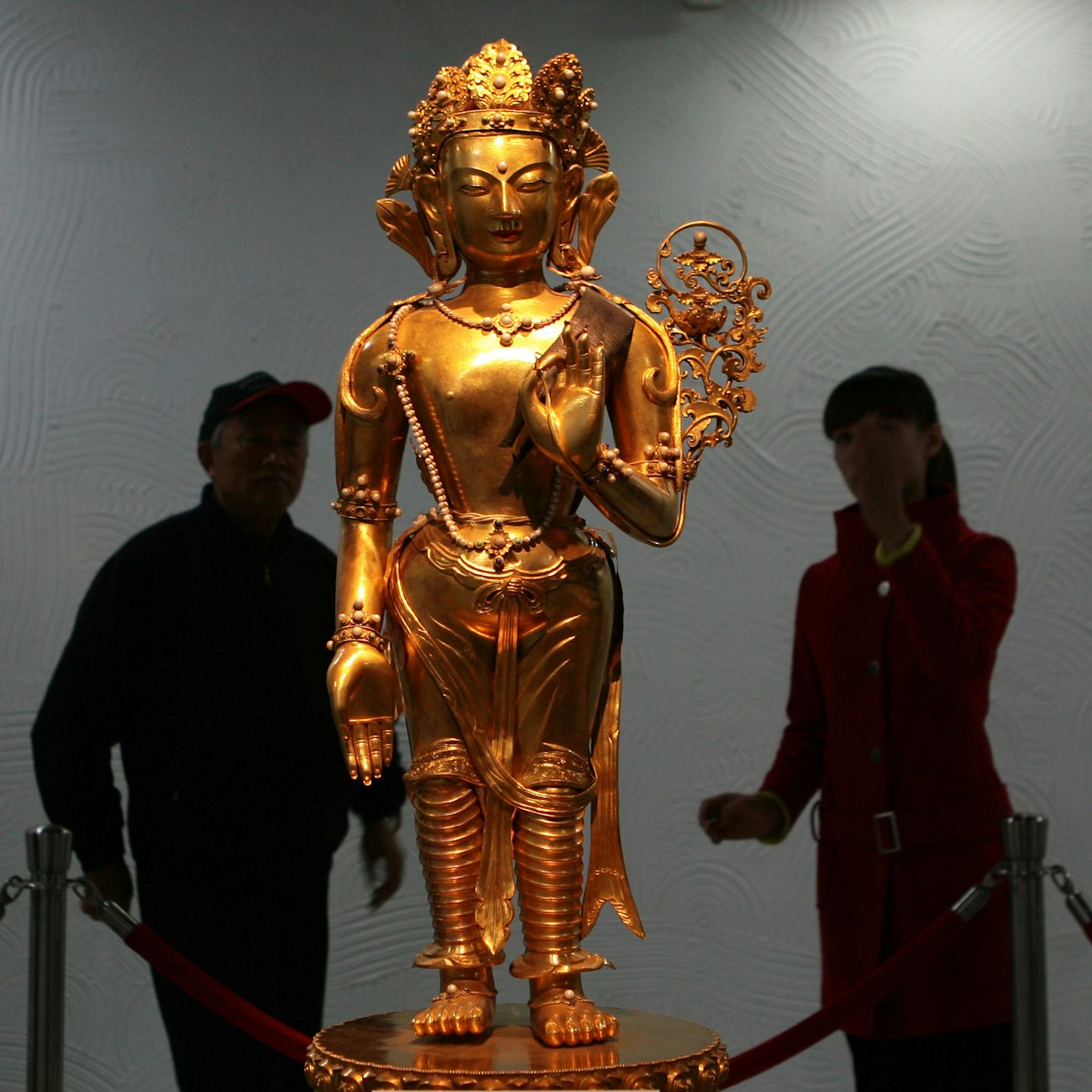This sacred site on Qixia Mountain (栖霞山, Qīxiá Shān), 22km northeast of Nanjing, was founded by the Buddhist monk Ming Sengshao during the Southern Qi dynasty, and remains an active place of worship. Long one of China’s most important monasteries, today it’s still one of its largest Buddhist seminaries. The mountain's maple trees are a major draw in November when the hills are splashed in crimson and bronze.
The two main halls are the Maitreya Hall, with a statue of the Maitreya Buddha sitting cross-legged at the entrance; and the Vairocana Hall, housing a 5m-tall statue of the Vairocana Buddha.
Behind Qixia Temple is the Thousand Buddha Cliff (千佛岩, Qiānfó Yán). Several grottoes housing stone statues are carved into the hillside, the earliest of which dates as far back as the Qi dynasty (AD 479–502); others are from the Tang, Song, Yuan and Ming dynasties. There is also a small stone pagoda, Sheli Pagoda (舍利塔, Shèlì Tǎ), which was built in AD 601 and rebuilt during the late Tang period. The upper part has engraved sutras and carvings of Buddha; around the base, each of the pagoda’s eight sides depicts tales from the life of Sakyamuni.
Continue northwards to admire lovely views in the scenic area behind the temple. The steep path meanders via an array of pavilions and rocky outcrops: it's serene, so consider bringing lunch and spending time here.
Get to the temple from Nanjing by public bus (南上, Nán Shàng; ¥2.50, one hour) from a stop by Nanjing Train Station. The bus stop is on a dusty highway, 500m south of the entrance.




